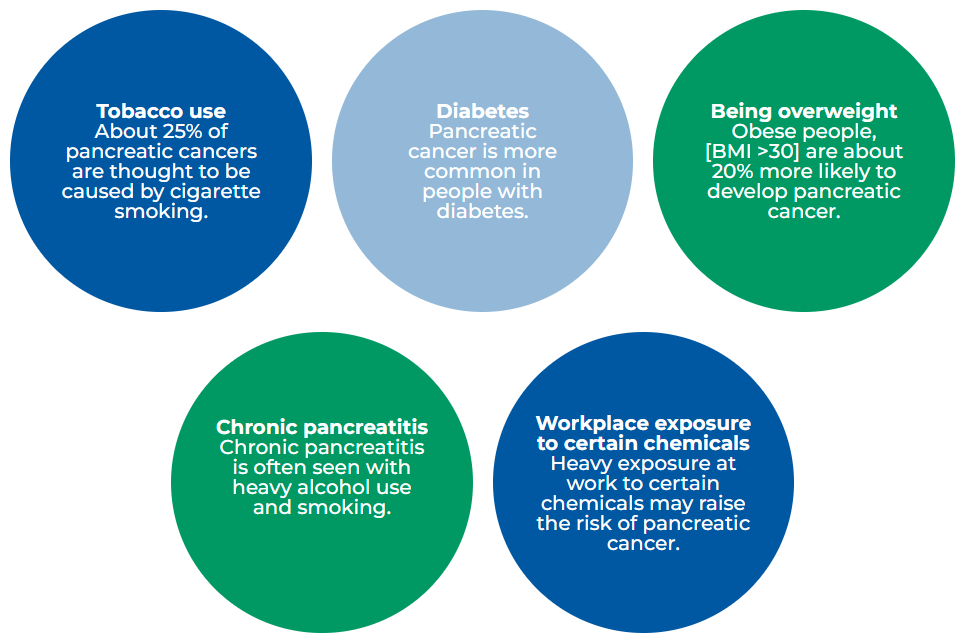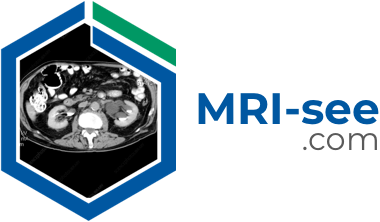
Risk factors that can’t be changed
Age: The average age at the time of diagnosis is 70.
Sex: Men are slightly more likely to develop pancreatic cancer than women.
Race: African Americans are slightly more likely to develop pancreatic cancer than whites.
Family history: Pancreatic cancer seems to run in some families, though most people who get pancreatic cancer do not have a family history of it.
Screening in people who have a family history of pancreatic cancer may involve inherited genetic syndromes. Examples of genetic syndromes that can cause pancreatic cancer include:
- Hereditary breast and ovarian cancer syndrome, caused by mutations in the BRCA1 or BRCA2 genes
- Hereditary breast cancer, caused by mutations in the PALB2 gene
- Familial atypical multiple mole melanoma (FAMMM) syndrome, caused by mutations in the p16/CDKN2A gene and associated with skin and eye melanomas
- Familial pancreatitis, usually caused by mutations in the PRSS1 gene
- Lynch syndrome, also known as hereditary non-polyposis colorectal cancer (HNPCC), most often caused by a defect in the MLH1 or MSH2 genes
- Peutz-Jeghers syndrome, caused by defects in the STK11 gene. This syndrome is also linked with polyps in the digestive tract and several other cancers
Chronic pancreatitis (due to a gene change): Chronic pancreatitis is sometimes due to an inherited gene mutation. People with this inherited (familial) form of pancreatitis have a high lifetime risk of pancreatic cancer.
Factors with an unclear effect on risk
Diet
Ingesting red and
processed meats,
saturated fats, and
sugary drinks may
also increase this risk.
More research is
needed in this area.
Physical inactivity
Some research
shows a sedentary
lifestyle might
increase pancreatic
cancer risk.
Coffee
Some older studies
say drinking coffee
might increase the
risk of pancreatic
cancer, but more
recent studies have
not confirmed this.
Alcohol
Some studies
demonstrate a link
between heavy
drinking and
pancreatic cancer.
Infections
Some data suggest
ulcer-causing bacteria
Helicobacter pylori
(H. pylori) or infection
with Hepatitis B may
increase the risk of
getting pancreatic
cancer.

